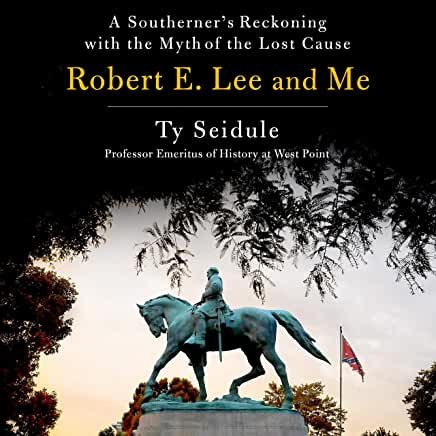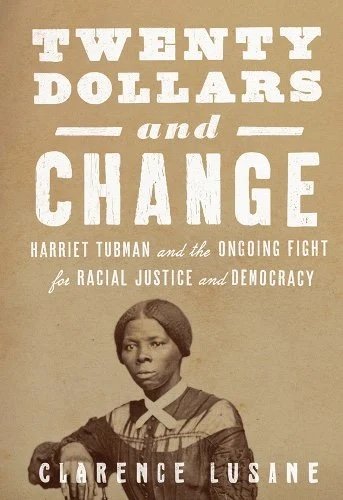
Books & Articles
Books
An American Genocide: The United States and the California Indian Catastrophe
by BENJAMIN MADLEY
Between 1846 and 1873, California's Indian population plunged from perhaps 150,000 to 30,000. Benjamin Madley is the first historian to uncover the full extent of the slaughter, the involvement of state and federal officials, the taxpayer dollars that supported the violence, indigenous resistance, who did the killing, and why the killings ended. This deeply researched book is a comprehensive and chilling history of an American genocide.
Braxton Bragg and Confederate Defeat, Vol. 1
BY GRADY McWHINEY
Braxton Bragg and Confederate Defeat, Vol. 2
BY JUDITH LEE HALLOCK
Braxton Bragg General Of the Confederacy
BY DON CARLOS SEITZ
Braxton Bragg: The Most Hated Man in the Confederacy
BY EARL J. HESS
As a leading Confederate general, Braxton Bragg (1817–1876) earned a reputation for incompetence, for wantonly shooting his own soldiers, and for losing battles. This public image established him not only as a scapegoat for the South’s military failures but also as the chief whipping boy of the Confederacy. The strongly negative opinions of Bragg’s contemporaries have continued to color assessments of the general’s military career and character by generations of historians. Rather than take these assessments at face value, Earl J. Hess's biography offers a much more balanced account of Bragg, the man and the officer.
Genocide and Vendetta
BY LYNWOOD CARRANCO & ESTLE BEARD
One of the best books on the genocidal history of our area is difficult to get and is kept on reserve in local libraries due to its age and scarcity but you can read it for free online.
- Philip Zwerling, Ph.D.
Here’s another link for this book:
The Mendocino Indian Reservation
By ROBERT WINN
In 1855, following a year of famine and freezing weather, white settlers complained indigenous people, Pomo and Yuki, were stealing their crops and property. They threatened a war of “extermination” (pg. 10) in response.
A reservation was established in 1856 on the Mendocino Coast and thousands of indigenous people were driven to and held on 25,000 acres between the Noyo and Ten Mile Rivers. The land was farmed and buildings erected. The corrupt white administration of the reservation stole funds allocated for the indigenous and allowed the construction of a private white owned saw mill at the mouth of the Noyo, on government land, disrupting fishing grounds. Indigenous people were pressed into labor. Sexual abuse by Whites was common and venereal disease an epidemic (pg. 24)
20 US soldiers arrived in 1857 to establish an Army post. At first they protected the indigenous people from the worst depredations but by 1861, accord to the Superintendent’s report they were “worse than useless.” (pg. 27). Most troops were withdrawn to fight in the east when the Civil War began, White settlers as vigilantes replaced them.
The government abandoned the Reservation in 1866 and opened it to public sale. Vigilantes began “a campaign of extermination” (pg. 28) in what became known as “The Mendocino War.” William Frazier of Long Valley testified of one massacre: “we attacked and killed twenty, consisting of bucks, squaws, and children . . .” (pg. 29)
“Between 1858 and 1873 the population of the Yuki decreased from 3000 to 500, while the population of the Pomo fell from 3600 to 1800.” (pg. 31)
“White slave traders . . . had been stealing Indian children and selling them to settlers as ‘apprentices’ for 50 to 100 dollars apiece.” (pg. 34) Finally the indigenous were removed from the Coast and forced inland.
Murder State
by Brendan C. Lindsay
In the second half of the nineteenth century, the Euro-American citizenry of California carried out mass genocide against the Native population of their state, using the processes and mechanisms of democracy to secure land and resources for themselves and their private interests. The murder, rape, and enslavement of thousands of Native people were legitimized by notions of democracy--in this case mob rule--through a discreetly organized and brutally effective series of petitions, referenda, town hall meetings, and votes at every level of California government.
Regulars In The Redwoods
BY William F. Strobridge
California's tumultuous era between discovery of gold and the Civil War brought an abrupt admittance to statehood in 1850 and the replacement of military government standards with new political aims. Little was left for Indian sustenance. Amid the flux, between California citizens and California Indians, was the Regular Army.
Careful study of original source material by the author illuminates the complicated role of the Regulars in frontier history. This detailed account of the Regular Army's attempts to maintain peace replaces the inadequate portrayal of the "Indian fighting Army" during a neglected period in California military history.
Twenty Dollars and Change
Written by: Clarence Lusane (Author) Kali Holloway (Foreword by)
Twenty Dollars and Change places Harriet Tubman's life and legacy in a long tradition of resistance, illuminating the ongoing struggle to realize a democracy in which her emancipatory vision prevails.
“A 2021 study by researchers at the University of Virginia confirmed that there is a direct correlation between confederate monuments and white racial terror, including that “the number of lynching victims in the county is a positive and significant predicator of the number of confederate memorializations in the county.”” - Clarence Lusane Twenty Dollars and Change
“These monuments and statues are narratives and they not only tell a story but offer a form of action.” -Clarence Lusane on The Chris Hedges Report podcast
WE ARE THE MIDDLE OF FOREVER
Edited by: Dahr Jamail and Stan Rushworth
A powerful, intimate collection of conversations with Indigenous Americans on the climate crisis and the Earth's future
“Mankind has a chance to change the direction of this movement, do a roundabout turn, and move in the direction of peace, harmony, and respect for land and life. The time is right now. Later will be too late.”
— Hopi elder Thomas Banyacya, from the introduction of We Are the Middle of Forever
The federally recognized Round Valley Indian Tribes are a small, confederated people whose members today come from twelve indigenous California tribes. In 1849, during the California gold rush, people from several of these tribes were relocated to a reservation farm in northern Mendocino County. Fusing Native American history and labor history, William Bauer Jr. chronicles the evolution of work, community, and tribal identity among the Round Valley Indians in the nineteenth and twentieth centuries that enabled their survival and resistance to assimilation.
Drawing on oral history interviews, Bauer brings Round Valley Indian voices to the forefront in a narrative that traces their adaptations to shifting social and economic realities, first within unfree labor systems, including outright slavery and debt peonage, and later as wage laborers within the agricultural workforce. Despite the allotment of the reservation, federal land policies, and the Great Depression, Round Valley Indians innovatively used work and economic change to their advantage in order to survive and persist in the twentieth century. We Were All Like Migrant Workers Here relates their history for the first time.
Articles
Ku Klux Klan meeting in Bear Valley, ca.1920 [Photograph from both University of Southern California and California Historical Society libraries.]
‘Defend Against All Enemies’: When Nativism and Moral Panic Fueled the Rise of the Ku Klux Klan in Mendocino County
BY MATT LAFEVER ON APRIL 9, 2022
Mendo Fever
The Destruction of the Indian in Mendocino County 1856 - 1860
BY GARY E. GARRETT
Early California Laws and Policies Related to California Indians
BY Kimberly Johnston-Dodds
A Pomo girl 1896-1924
Living at Kah-la-deh-mun
BY CHRIS CALDER ON NOVEMBER 21, 2021
Anderson Valley Advertiser
Harriet Campbell Stanley Rhoades lives on the north bluffs overlooking Noyo Bay. Even in this region of beautiful vistas and peaceful spots, few places can compare with Harriet's. Her back door opens onto an infinity of sea and sky. Wonderfully serene on a clear summer day, in winter it stands full in the face of the mighty gales that can sweep out of the southwest.
Harriet grew up on this spot, as did her children and grandson. For that reason alone, her attachment to the place is unbreakable. Even so, travel takes her far and wide these days. In August, it was to Milwaukee, where she was elected treasurer of the National Indian Council on Aging. In September and again in October, it was Albuquerque, where she served on the selection committee for a new NICOA executive director. In between her longer trips, she heads to Sacramento, where she chairs the Native American Advisory Council for the California Department of Forestry, protecting sacred and archaeological sites and cultural resources affected by logging and forest fire-fighting.
“My philosophy is that you are only on this good old Mother Earth for a breath of time,” she says, “so being involved in issues that will help a group of people is the way I want to do it, and that's how I've structured my life.”


















